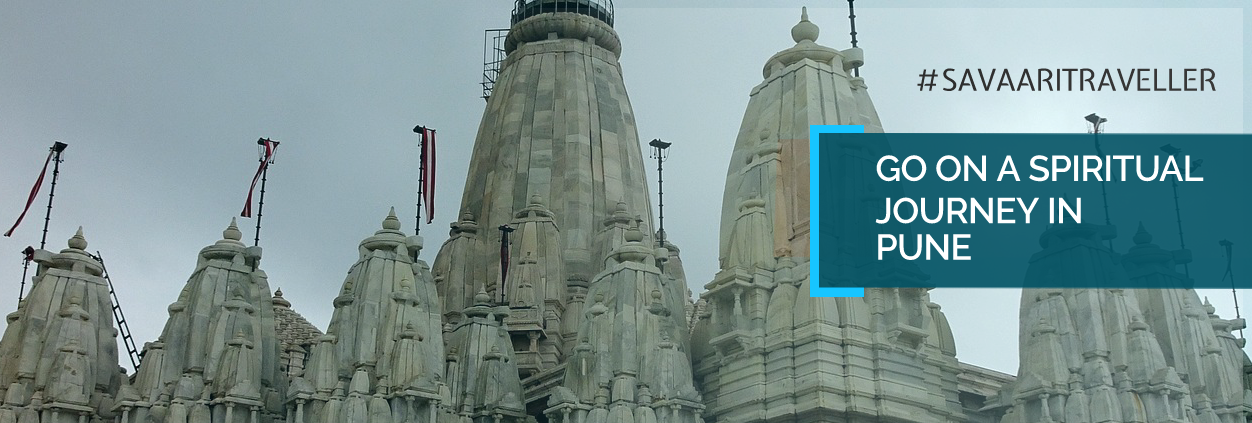Significant religious sites in Pune
When you travel to a hip and hi-tech, modern city like Pune, your expectations form around the lifestyle, music, food and similar urban indulgences. But there’s always a side to such places which is only visible to those who seek. For the faithful, there are abundant religious respites in Pune. And being historically cosmopolitan, its places of worship are also spread across churches, synagogues, temples, mosques, and others.
For those who seek spiritual vibes or even those who just seek knowledge of religions, a visit to these religious sites can be wondrous.
We list down the most significant places of religious importance in and around the city of Pune.
Parvati Hill & Temple
Right outside the city, you will find this 17th-century temple, resting atop a hillock. The Parvati temple enshrines idols of Parvati and Devdeveshwar. It is said, that the Peshwa rulers of that time built this holy sanctum with gold idols. Later, after the idols were stolen, they were replaced with gold plated silver idols, to maintain its original look. There are also beautifully made temples of Lord Ganesha and Kartikeya, which complete the picture. To reach the temple you would have to trek up the 108 steps. So, if you prefer a little muscle work, then the Parvati temple can work both for your mind, body, and soul.
Pataleshwar Cave Temple
Located in Shivaji Nagar, this is one of the oldest evidence of Hindu civilization in Pune. The 8th-century Pataleshwar Rock Temple was built by the Rashtrakuta dynasty, in the ancient rock-cut architecture style, something you might see in Ajanta and Ellora caves. The temple is dedicated to and enshrines an ancient idol of Lord Pataleshwar, an avatar of Shiva. Also residing on the same premise are idols of Lord Ram, Sita, Lakshman, Ganesh, and Lakshmi. The imposing architecture, the ancient basalt structure, and the ancient deities render a surreally spiritual ambiance.
Kasba Ganapati
The presiding deity of Pune, the name refers to both the temple and the idol of Ganesha that it enshrines. It is one of the ancient shrines of the city and is said to be established by Shivaji’s mother, who was a pious lady and a devoted worshipper of Lord Ganesha. A small but highly significant place of worship, this temple also serves as a prominent pilgrimage center for devotees of Pune and other parts of the state.
Jamshedji Jeejeebhoy Fire Temple
The first 21st-century Parsi temple of the country, this religious site and community center is the initiative of Vispy Wadia, a reformist. The idea was to bring together all ex-communicated Parsis of the community and adopt a more liberal approach to the religion, contrary to its orthodox beliefs. This Fire Temple is an inclusive place of worship that welcomes people of other faith to come, pray and learn about the religion, unlike what traditional Fire Temples do. Recently built, in the heart of the city, Jamshedji Jeejeebhoy Fire Temple would be the first insight into a Parsi temple for visitors and tourists.
BAPS Swaminarayan Temple
Dedicated to Narayan, or Lord Vishnu in another form, the BAPS Swaminarayan Temple is one of the first religious institutions in India to have branched out to foreign countries. The temple invites devotees of Vishnu, from all over the world every day. An architectural marvel at the same time, the temple is spread across a huge premise with gardens, fountains, and community and education center. If you visit the Swaminarayan Temple, make sure you have a few hours to spare so you can explore it in its entirety and join the evening aarti, which is a sight to behold.
Dagdusheth Ganpati Temple
This Ganesha temple is not only one of the most popular and ancient temples of Pune but also of the country. A prominent tourist attraction of the city and an important pilgrimage center, this religious site draws people from all over, round the year. The temple derives its name from a sweet merchant of ancient Pune who established this temple after losing his only child to plague. There are two best times to visit the temple. One is during Ganesh Chaturthi when the entire place is lit up and alive with festivities. Another time is during Akshaya Tritiya, in the month of April, when the Mango Festival is celebrated.
St. Mary’s Church
Nestled in the greenery and serenity of the Cantonment-Camp area, the St. Mary’s Church is one of the oldest churches in the town. Built in 1892, this church reflects a synthesis of classic colonial and Indian architectural site. This Anglo-Catholic church was established by and for the British officials and their families, but thereafter became a popular place of worship for the local Catholics. Also called the Mother Church of the Deccan, St. Mary’s recently celebrated their 190 years of activity.

